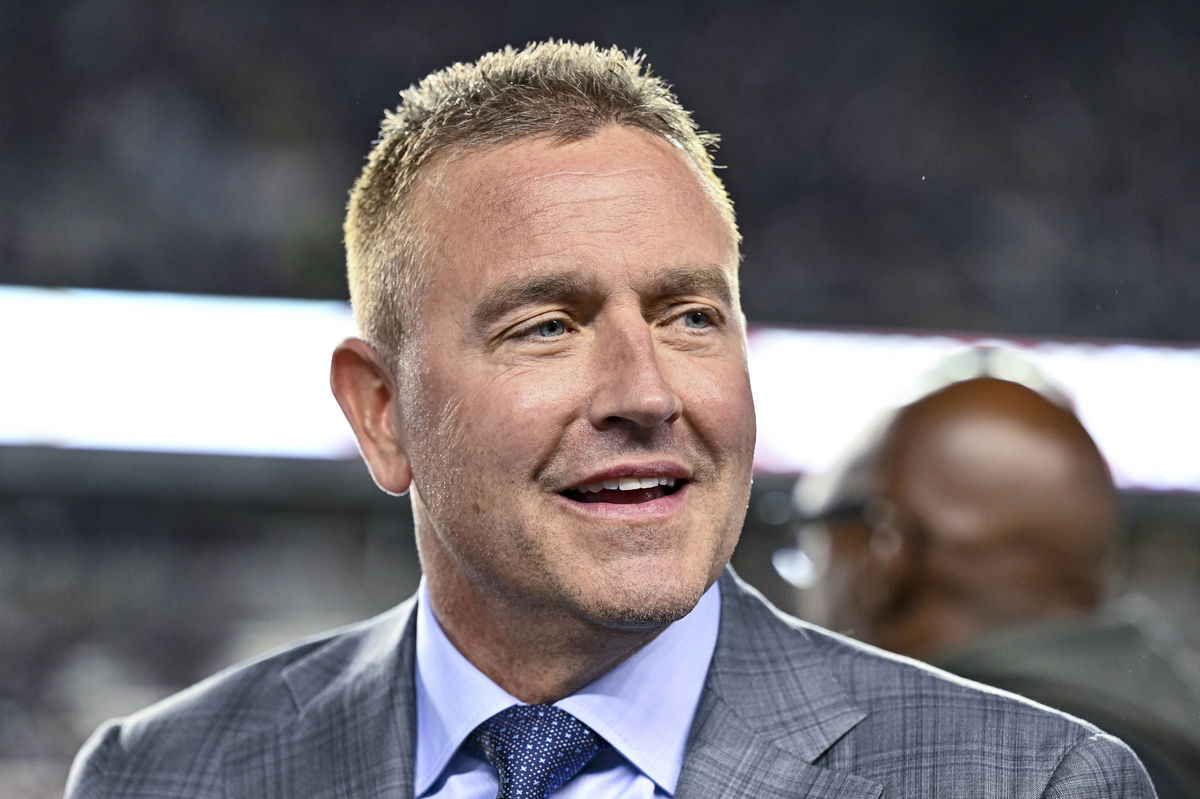
Imago
NCAA, College League, USA Football: Texas at Texas A&M Nov 30, 2024 College Station, Texas, USA ESPN s College GameDay analyst Kirk Herbstreit looks on prior to the game between the Texas A&M Aggies and the Texas Longhorns. The Longhorns defeated the Aggies 17-7 at Kyle Field. College Station Kyle Field Texas USA, EDITORIAL USE ONLY PUBLICATIONxINxGERxSUIxAUTxONLY Copyright: xMariaxLysakerx 20241230_mcl_la6_066

Imago
NCAA, College League, USA Football: Texas at Texas A&M Nov 30, 2024 College Station, Texas, USA ESPN s College GameDay analyst Kirk Herbstreit looks on prior to the game between the Texas A&M Aggies and the Texas Longhorns. The Longhorns defeated the Aggies 17-7 at Kyle Field. College Station Kyle Field Texas USA, EDITORIAL USE ONLY PUBLICATIONxINxGERxSUIxAUTxONLY Copyright: xMariaxLysakerx 20241230_mcl_la6_066
College football is facing a perfect storm, with NIL deals acting as lightning bolts shaking up everything. The proposed House vs. NCAA settlement, suggesting revenue sharing capped at $20.5 million, pushes the sport into uncharted waters. Yet with regulated NIL, there are still concerns emerging. And Kirk Herbstreit sounds alarmed as players now hold significant power—freely entering the portal, securing NIL deals, and the worst part? It’s also creating tension in locker rooms where different paychecks divide players. This chaos is undeniable, and with a lack of clear regulations or collective bargaining, the sport risks losing the balance that once defined it.
Watch What’s Trending Now!
So, under the new NIL framework, individual athlete deals won’t count against a school’s $20.5 million revenue-sharing cap. Power Four and Pac-12 commissioners confirm schools decide how to allocate this money among teams. Many are likely to adopt a baseline model, mirroring the settlement’s backpay formula, directing roughly 75% to football, 15% to men’s basketball, 5% to women’s basketball, and the remaining 5% to other sports, quickly transforming college athletics’ financial structure.
ADVERTISEMENT
Kirk Herbstreit’s plea gets backing as more concerns loom
Three weeks into the new revenue-sharing model in college sports, doubts persist about whether this new system will be more effective than the NCAA’s past efforts. Coaches and administrators are expressing a range of emotions, a mix of optimism and apprehension. Pittsburgh Panthers’ football coach Pat Narduzzi sums it up well: “I hate to say, I don’t have faith because you have to have faith for anything to work. So, I have a lot of faith going in, but I’ll let you know in a year. You know, the NCAA couldn’t control it in the past. There’s no control right now. So it’s got to be better than nothing, right?”
The new College Sports Commission (CSC) is now the main enforcer, tasked with policing schools within the revenue-sharing limits set by the House settlement. Working with Deloitte, the CSC is overseeing player NIL deals and readying itself to penalize programs, coaches, or administrators who violate the rules. But ACC commissioner Jim Phillips is publicly advocating for a tougher stance. “I think it’s just a matter of when someone is [punished], and that’s O.K. That needs to happen. And if it happens in our league, I won’t feel any differently about it because this is about us trying to settle down the whole entire enterprise,” Phillips said.
Top Stories
Bills Legend Jim Kelly Announces Final Cancer Update After Years of Battle
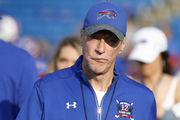
Robert Saleh Makes Final Decision on Head Coaching Job Away From Kyle Shanahan & 49ers
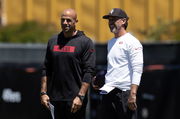
Jimmie Johnson & Co. Robbed of Millions as Court Exposes Disastrous Fallout of Jim France’s ‘No Bueno’ Decision

Calls Mount Against Refs’ Controversial Decision Involving Dak Prescott in Cowboys vs Lions TNF Game
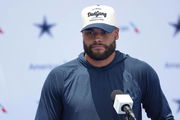
Jeff Gordon Duped Into False Hope as NASCAR’s Blatant Lie Exposes Jim France as Culprit No. 1

After ‘Firing’ Tony Stewart, Leah Pruett Ready to Reclaim Her Title as Team’s No.1 Top Fuel Driver
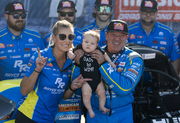
This shift becomes even more complicated after lawyers in the House case negotiate changes to how the CSC handles collectives. Yahoo Sports reports that the CSC will now allow collectives to engage in NIL deals as long as they meet Deloitte’s “range of compensation” formula. This decision reverses earlier restrictions that blocked deals managed by school-affiliated collectives. The ruling directly affects how schools balance their $20.5 million revenue-sharing cap with market-based NIL agreements for athletes.
ADVERTISEMENT
Like Kirk Herbstreit, even Wake Forest’s Jake Dickert emphasizes the need for structure and clarity, drawing comparisons to professional sports. “We’ve got to decide if we want Major League Baseball or if we want the NFL. Major League Baseball has some teams with $250 million [payrolls] and some teams playing Moneyball at $40 million,” Dickert said. “Or do we want a hard salary cap like the NFL, and who’s doing the best with their resources? You know, the NFL doesn’t have GoFundMe for free agents, right? They don’t; they play with a certain set of rules.”
We must wait to see the change, as faith and cautious optimism are all stakeholders can depend on until the system proves itself.
ADVERTISEMENT
ADVERTISEMENT
ADVERTISEMENT
ADVERTISEMENT

